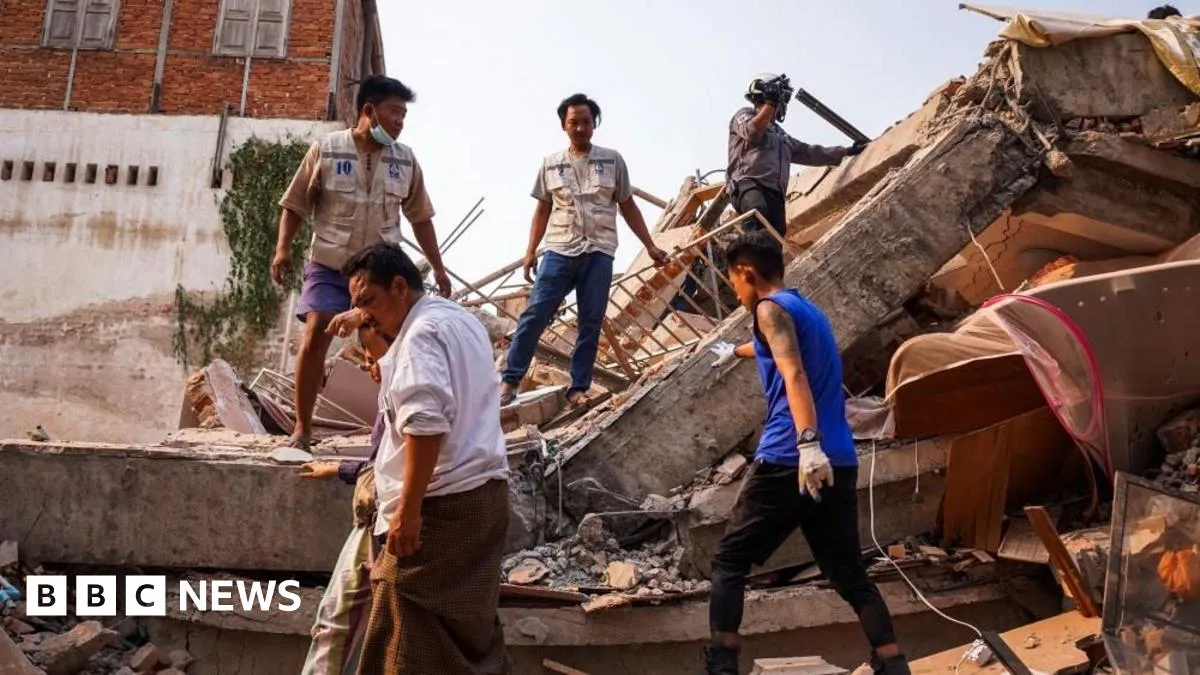
In a recent press conference at the site of a collapsed high-rise in Bangkok, Thailand’s Deputy Prime Minister, Anutin Charnvirakul, addressed the media regarding the tragic incident. The skyscraper, which was still under construction, came down unexpectedly, prompting immediate concerns about safety and structural integrity. When questioned about the cause of the collapse, Charnvirakul stated, “Something might have gone wrong.” He emphasized the seriousness of the situation by announcing the formation of an investigation committee tasked with uncovering the reasons behind the collapse. The committee is expected to deliver its findings within seven days, focusing on the roles of the designer, project controller, and builder involved in the project. Charnvirakul assured the public, “We will definitely find the true reasons as to why this building has collapsed.”
Shifting focus to the construction details, Thailand's Industry Minister, Akanat Promphan, revealed alarming findings at the scene of the collapse. During his media address, Promphan disclosed that anomalies were discovered in the steel used for the building's construction. Samples have been collected for testing, raising questions about whether the materials met industry standards. He noted that if investigations confirm that the steel was subpar, his ministry would pursue legal action against those responsible for the construction. The high-rise was built by a joint venture between Italian-Thai Development and the Thai branch of China Railway Number 10 Engineering, as reported by local media.
As rescue operations continue, authorities are working tirelessly to locate survivors trapped beneath the rubble. Tessa Wong from the BBC reported that emergency teams have already rescued over 100 individuals, including several from collapsed structures such as hotels and schools throughout the affected regions. Unfortunately, the death toll has also risen, with updated figures indicating that 11 individuals have died, while many remain missing. The situation remains fluid, with rescuers adapting their efforts as they navigate the debris.
In a related story, the humanitarian crisis in Myanmar has been exacerbated by ongoing military actions. Reports indicate that Myanmar's military junta launched air strikes less than an hour after a recent earthquake, further complicating rescue efforts and humanitarian aid access. James Rodehaver, a UN official, highlighted the military's longstanding role in limiting aid in the region and noted that these air strikes targeted areas affected by the earthquake, seemingly hindering rescue operations.
Rescue teams in Myanmar are racing against time to find survivors trapped beneath collapsed buildings, with tragic updates coming in from various regions. The local fire services report that dozens of survivors have been located, but many bodies have also been recovered. In Sagaing City alone, 36 individuals have been rescued, and 88 bodies have been retrieved. The Sky Villa complex in Mandalay, which suffered severe damage during the earthquake, has become a focal point for rescue efforts, with over 90 people still believed to be trapped.
Experts have noted that predicting earthquakes remains a significant challenge due to the complexities of tectonic plate movements. While scientists can identify fault lines and historical earthquake patterns, the exact timing of an earthquake is still unpredictable. This unpredictability complicates emergency planning, particularly in regions like Thailand, which may not traditionally consider themselves at high risk for earthquakes. As a result, many buildings in such areas may not be constructed to withstand seismic activity, leading to catastrophic consequences when earthquakes do occur.
In the aftermath of the collapse, Bangkok's Deputy Governor, Thawida Kamolvej, reiterated the commitment to ongoing rescue efforts. Despite the challenges posed by the massive debris, rescue teams are employing advanced technologies like X-ray machines to detect movement beneath the rubble. Kamolvej expressed her determination to locate the 79 missing individuals, stating, “We are going to continue working around the clock, we have more people coming in. I have to find them.”
As Myanmar braces for the upcoming monsoon season, concerns are mounting regarding the potential displacement of individuals already affected by last year’s severe flooding. The International Rescue Committee has warned that the combination of ongoing conflict and natural disasters could lead to significant humanitarian challenges, particularly for those without adequate shelter. The extreme weather conditions pose a threat to the already vulnerable population, exacerbating the crisis.
As recovery efforts proceed, forensic teams have begun their investigations at the site of the collapsed high-rise in Bangkok. Recent reports indicate that authorities found a white bag, suggesting the possibility that another body has been recovered. The situation remains critical, with many families still awaiting news about their loved ones who are unaccounted for. Rescue efforts continue amid the ongoing investigations, with officials determined to uncover the causes of this tragic incident.